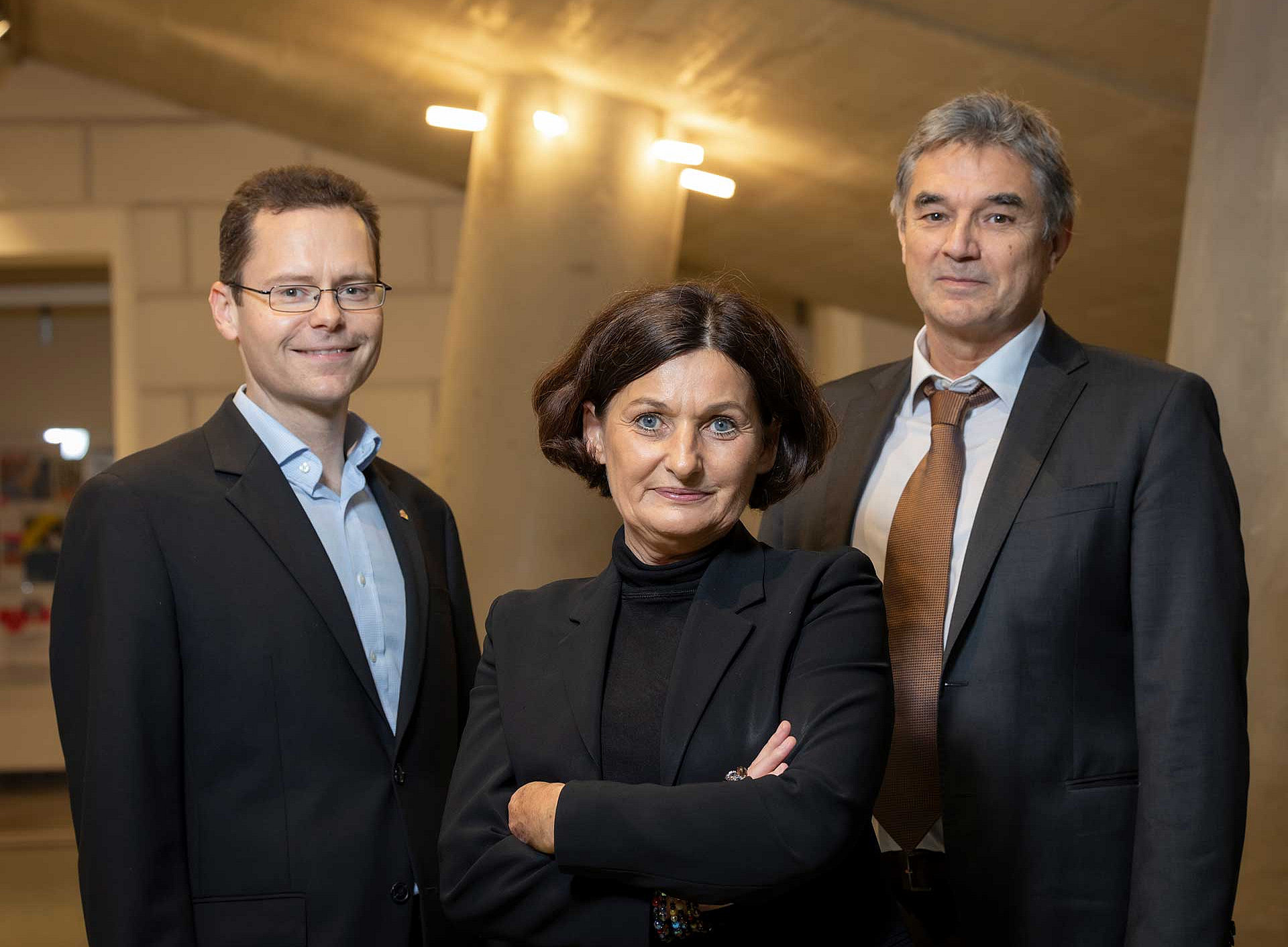What does NAWI Graz mean to you?
Joachim Reidl: NAWI Graz is a very efficient and close cooperation between two universities in the field of natural sciences, which is probably unique in Austria in its interlinking of teaching, infrastructure and research.
Andrea Höglinger: NAWI Graz is an excellent example of how the universities in Graz work together in the interests of students and research. NAWI Graz is enriching: for students, for teaching staff and for cross-university cooperation at rectorate level.
What are the advantages of NAWI Graz for individual employees?
Reidl: The advantages are a high degree of cooperation, the possibility of efficient use of expensive infrastructure and a vital exchange of research interests.
Höglinger: Together we are stronger and broader in terms of content, which benefits everyone.
What are the milestones/highlights of this cooperation for you?
Reidl: The highlights are certainly the high quality of education for our students (the best of both universities) and a lighthouse structure in the form of the Graz Center of Physics (GCP), which has emerged from NAWI Graz and will be physically visible from 2030, in which the physics institutes of both universities will research and teach in one place.
Höglinger: In the short year that I have been responsible for NAWI Graz at TU Graz, the trusting cooperation in the Steering Committee is certainly worth mentioning, simply because this is not a matter of course. Our predecessors at both universities have contributed a great deal to this. I am happy to be able to build on such an excellent basis for cooperation. My personal highlight was the opening of a joint "DocDay" - it was simply a pleasure to see doctoral students from both universities sitting together in one lecture hall and discussing their work.
What are the challenges of inter-university cooperation?
Reidl: Definitely the merging of the organizational structures, some of which are different.
Höglinger: I agree with that. In addition to the different organizational structures, the challenges also include different technical systems and cultures at the universities.
The ground-breaking ceremony for the Graz Center of Physics took place in June. Will there be further spatial and strategic collaborations in the future?
Reidl: Based on the developments of the GCP, further such collaborations could be realized. I'm thinking of the NAWI Graz GeoCenter in the field of geosciences and geotechnics.
Höglinger: When we talk about strategic cooperation, I see enormous potential in the area of research cooperation, but certainly also in the area of infrastructure. But of course this is always a question of budget.
NAWI Graz is managed by the eight-member NAWI Graz Steering Committee. The committee consists of two vice rectors (Joachim Reidl from the University of Graz and Andrea Höglinger from TU Graz) and six deans of the participating faculties at both universities.
